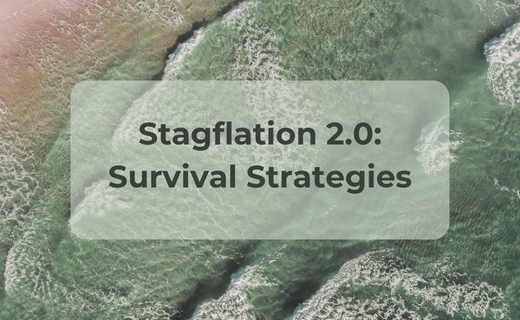Available in other languages:
Español | Français | Deutsch
Introduction: Why Scenario Planning Matters in Times of Chaos
We live in an era of radical instability. Economic crises, technological disruptions, pandemics, climate shocks, and geopolitical conflicts shake up established business models. As a result, traditional forecasting tools have become less reliable.
According to the McKinsey Global Institute (2023), approximately 65% of senior executives report a lack of confidence in their analytics teams’ forecasts following recent global disruptions. Additionally, a European Business Survey (2024) reveals that 78% of European organisations consider the past five years the most volatile in their history. This widespread sense of unpredictability underscores the urgent need for scenario planning—an approach that prepares companies for multiple possible futures, rather than relying on a single expected path.
In this article, we will examine why traditional forecasting methods often fail, explore how scenario planning provides a viable alternative, and discuss the crucial role consulting firms play in helping businesses navigate uncertainty.
Why Traditional Forecasting Fails and Scenario Planning Becomes Essential
Traditional forecasting relies on three pillars:
- Historical data — what happened before?
- Mathematical models — how to describe them,
- Trends and patterns — what might repeat.
However, as Harvard Business Review (2022) points out, these pillars collapse during periods of disruption. Historical data becomes irrelevant when new phenomena lack precedent. Statistical models break down when variables exceed normal ranges. Moreover, consumer behaviour often becomes unpredictable.
The Shrinking Lifespan of Business Strategies
For example, during the 2022 European energy crisis, companies that relied on long-term contracts suffered significant losses. In contrast, agile competitors maintained margins. Similarly, in retail, firms with robust e-commerce infrastructure adapted more quickly to lockdowns (OECD, 2023).
The average lifespan of a business strategy in Europe has shrunk from 4–5 years to just 1–2 years over the past decade (Deloitte, 2024). This dramatic shortening makes scenario planning not just helpful but essential. Companies can no longer rely on static long-term strategies. They must stay flexible, constantly adapting to shifting conditions.
Scenario Planning Approaches for Navigating Chaos
1. Developing Multiple Future Scenarios
Scenario planning involves designing several alternative futures. Typically, businesses consider:
- Optimistic (rapid market recovery),
- Pessimistic (more profound crisis),
- Neutral or stagnant (status quo),
- Breakthrough (unexpected innovation).
According to PwC (2023), 78% of successful companies apply scenario planning in their decision-making processes. However, only 37% of European companies consider their scenario planning processes “very mature” or “advanced”. This reveals a crucial gap between recognised need and actual practice. For consulting firms, this represents a significant opportunity to guide organisations toward more robust planning.
Why Multiple Scenarios Work
Multiple scenarios help organisations visualise diverse risks. For example, they may plan for supply chain disruptions, sudden regulatory changes, or shifts in consumer behaviour. As a result, they are better prepared to pivot when conditions change. Rather than being caught off guard, they can act decisively.
2. Decision-Making Under Uncertainty: Agile and Iterative Approaches
When data is scarce or unreliable, companies need agile methods to address these challenges. These include:
- Rapid prototyping and testing, such as A/B tests or pilot projects,
- Iterative processes — small steps paired with fast feedback,
- Expert judgment and intuition — especially when traditional metrics are insufficient.
Gallup (2024) reports that companies leveraging leadership experience often perform better during crises. Moreover, 65% of European companies plan to significantly increase investments in data analytics and artificial intelligence (AI) over the next two years (Accenture, 2024). These technologies can strengthen scenario planning by identifying hidden patterns and generating simulations.
Why Agile Beats Static Models
For example, Amazon tests new features in small markets before rolling them out globally. This agile approach reduces risk and improves outcomes. Likewise, using AI tools can help spot early warning signs humans might overlook. As a result, businesses make smarter, faster decisions.
3. Focusing on Business Resilience and Adaptive Strategy
Resilience is not merely surviving shocks; it means learning from them and improving. McKinsey (2023) identifies four resilience levels:
- Financial (reserves, credit access),
- Operational (flexible supply chains),
- Strategic (adjustable priorities),
- Cultural (employee engagement and upskilling).
Key Elements of a Resilient Organisation
To build resilience, companies should focus on:
- Diversification — products, suppliers, and markets,
- Reserves — financial, material, and human resources,
- Flexible processes — enabling rapid structural shifts.
For instance, Unilever has heavily invested in resilient supply chains. Netflix, on the other hand, successfully transitioned from a DVD rental service to a global streaming platform. Both companies applied scenario planning to anticipate changes and prepare adaptive strategies.
4. Leveraging Soft Data and Weak Signals in Scenario Planning
When quantitative data fails, qualitative insights gain importance. Businesses increasingly rely on:
- Expert interviews,
- Sentiment monitoring (including social media),
- Weak signal analysis — early indicators of significant changes.
Notably, 82% of European executives agree that their organisations must improve their ability to detect and respond to weak signals (Gartner, 2024). Integrating soft data into scenario planning enables businesses to anticipate shifts before they become apparent.
Why Weak Signals Matter
For example, remote work trends in the 2010s initially seemed niche. However, early signs, such as coworking spaces and flexible schedules, hinted at the coming transformations. Companies that picked up these signals early were better prepared for the 2020 pandemic shift.
5. Building a Culture of Critical Thinking
In chaotic environments, critical thinking becomes a core advantage. This includes:
- Questioning assumptions,
- Asking uncomfortable questions,
- Avoiding herd mentality.
How Critical Thinking Enhances Scenario Planning
MIT Sloan (2023) found that companies fostering critical thinking adapt to change 20–25% faster. Embedding this mindset into scenario planning encourages teams to challenge biases. As a result, they develop more resilient and well-rounded strategies.
For example, rather than assuming a key supplier will consistently deliver, teams might ask, “What if they fail?” This proactive thinking leads to stronger contingency plans.
The Role of Consulting Firms in Driving Advanced Scenario Planning
Consulting firms today are more than advisors; they co-create change with clients. BCG (2023) reports that clients most often request:
- Facilitation of scenario planning workshops,
- Training in adaptive leadership,
- Independent assessments,
- Advanced analytics (including AI tools),
- Resilience-building support.
Addressing the Maturity Gap
Many companies acknowledge the importance of scenario planning, but they often lack mature processes. Consulting firms help bridge this gap. They do so by:
- Leading scenario-based strategic workshops,
- Assisting with weak signal collection and interpretation,
- Designing adaptive key performance indicators (KPIs),
- Supporting leadership teams under stress.
For example, a consulting team might help a retailer prepare for potential supply chain disruptions by mapping out realistic response scenarios. As a result, the retailer gains clarity and confidence to act when disruption hits.
Future Trends: The Evolving Landscape of Scenario Planning
Emerging Developments in Scenario Planning
Accenture (2024) and Gartner (2024) highlight several upcoming trends:
- Hybrid forecasting models — combining AI and expert insights,
- Growing importance of Chief Resilience Officers (CROs),
- Increased investment in business stress testing,
- ESG (environmental, social, governance) factors are integrated into resilience planning,
- Regular, institutionalised scenario planning is becoming the norm.
Why These Trends Matter
These shifts reflect a growing awareness that businesses need both technological and human tools. For example, hybrid models enable rapid data analysis alongside human judgment. Meanwhile, CROs ensure that resilience is not just a buzzword, but an embedded organisational function.
Consequences for Businesses: Winners and Losers
Failure to adapt carries serious risks.
For example:
- Kodak lost to the rise of digital photography,
- BlackBerry fell behind in the smartphone revolution,
- Thomas Cook could not keep up with changing travel preferences.
Success Stories Through Scenario Planning
In contrast, several companies used adaptive strategies to thrive:
- Netflix pivoted to streaming ahead of competitors,
- Tesla thrives on rapid innovation and iteration,
- Unilever strengthened its supply chains to withstand shocks.
These examples demonstrate that companies that integrate scenario planning into their strategy are better positioned to survive and thrive.
Our expert guidance in business forecasting will help you identify and mitigate threats and transform external challenges into strategic opportunities. [Contact Us]
Conclusion: Thriving in a World Where Everything Breaks
Predicting the future when everything seems broken is not about making accurate guesses. Instead, it’s about preparing for multiple possibilities, staying adaptive, and building resilience.
As Nassim Nicholas Taleb writes in Antifragile (2012):
“The most successful systems are not those that merely withstand chaos, but those that become stronger from it.”
In today’s uncertain world, the winners are not necessarily the biggest or brightest, but rather the most adaptable. Consulting firms that help clients master scenario planning, leverage weak signals, use AI tools, and cultivate adaptive cultures will be indispensable partners in the coming decades.





